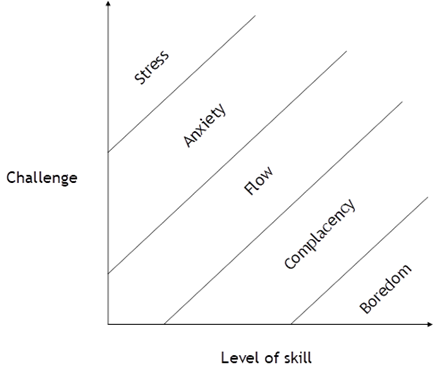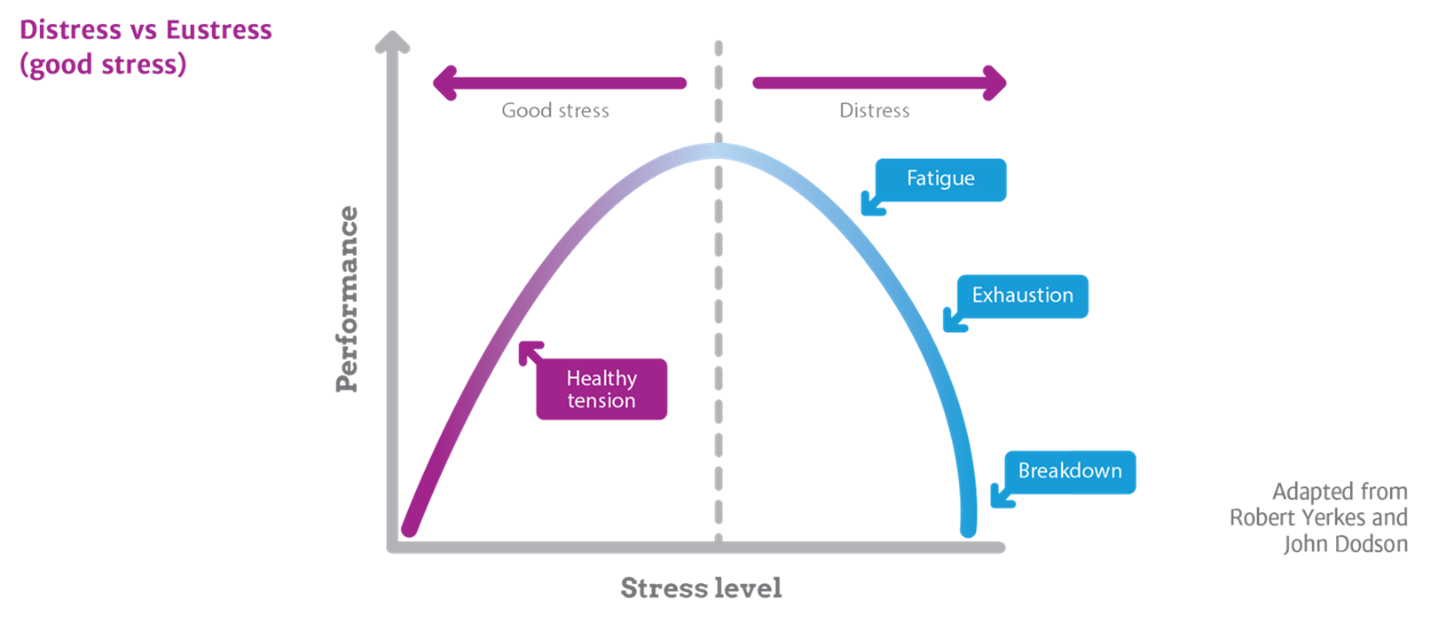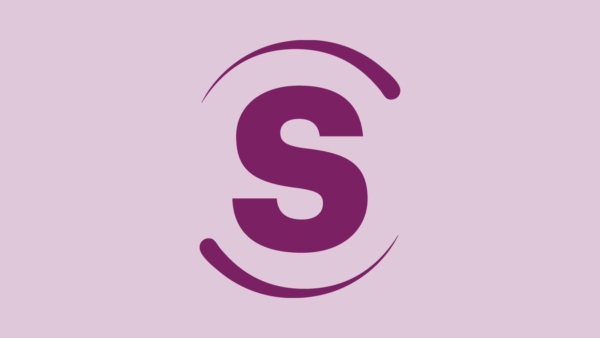What is flow and why does it matter?
In his book, ‘Flow: The Psychology of Optimal Experience’, Hungarian Psychologist, Mihaly Csíkszentmihályi outlined his theory that people are most happy when they are in a state of flow— a state of concentration or complete absorption with the activity at hand and the situation.
Flow is a centrepiece idea in the universe of positive psychology. In this blog, I want to get into flow with you by diving deeper into this idea, how it relates to stress and stress management, how you can use that knowledge to get more from your daily work as well as giving give you my Top 3 tips for getting into a flow state.
So, the meaning of ‘flow’, an optimal state of intrinsic motivation, where you’re fully immersed in what you’re doing. This is a feeling everyone has at times, showing up as feelings of freedom, enjoyment, fulfilment and skill. During flow, any concerns you have about the here and now (time, food, ego-self, etc.) are typically ignored.
Csíkszentmihályi described flow as “being completely involved in an activity for its own sake. The ego falls away. Time flies. Every action, movement, and thought follows inevitably from the previous one, like playing jazz. Your whole being is involved, and you’re using your skills to the utmost.”
To get to flow, and this is where the link between flow and stress gets super-interesting, you need to strike a balance between the challenge of the task and your own skill. If the task is too easy or too difficult, it just doesn’t…flow.
How does flow link to stress and stress management in the workplace?
Outside the flow state (where your level of skill is perfectly matched with the challenge of a task), either skill outstrips task challenge and you may get complacent, or in a more extreme form, bored. Alternatively, challenge may outstrip skill and you may feel anxious, worried, or even stressed. Here’s a chart showing these zones:

Thing is, the thinking here is really closely aligned to some work by psychologists Robert Yerkes and John Dodson in…wait for it…1908. Which is really helpful for our understanding of stress and how to manage it.

The Yerkes-Dodson law states that performance increases with physiological or mental arousal, but only up to a point. When levels of arousal become too high, performance decreases as we go from ‘eustress’ (that’s good stress) to distress (which is…well, distress can’t be good right? Even if it’s a furniture style choice).
The models are different but the ideas from Flow build on Yerkes and Dodson’s stress model. Both models say that if your skills aren’t up to the task, you’re going to feel anxious, get tired quicker, and in the end feel stressed and, if you don’t change something, you’re going to burn out.
And the build from the Flow model is that whereas Yerkes and Dodson’s work assumes that everything below the ‘distress’ line is ‘good stress’. Actually if your skill is way higher than the challenge required in a task, that’s also potentially stressful, but in a different way. You can start switching off, getting complacent, bored and in the end, withdrawing because the task just isn’t keeping your attention or focus.
The area where both models absolutely align is at the ‘sweet spot’ where performance is at its highest and where autonomic and cortical arousal are at a manageable level, where Csíkszentmihályi describes flow as happening.
So why is this important for stress management?
If you know what switches you on in your day to day, where you have a level of skill to accomplish a good level of performance, that will lead you to a place of healthy eustress according to stress researchers Yerkes and Dodson, and to a place of Flow according to Csíkszentmihályi.
A model for managing your stress and getting more out of your day to day at work
Practically-speaking, this can make a really big difference to how you organise your work and, if you’re in a corporate role, how you talk to your line manager about where you are experiencing moments of high performance, enjoyment, immersion and flow. And where either you’re getting too stressed out with difficult tasks, or not stimulated enough with elements of your role that are too easy.
My recommendation, and this is for anyone doing any job role, is to use both models – draw them out so that you can put your own marks on them. Start by drawing out the upside-down U-shape stress curve that Yerkes and Dodson came up with and put a cross where you’d describe yourself in general right now – in terms of stress and in terms of performance.
That’s a great conversation to have with your boss and also with yourself as it will help you get a sense of your current levels of stress. But to get even more value, it’s got to help to understand why you’re feeling that level of stress, whatever it might be.
Next, draw out a ‘flow’ chart like the one I’ve described, with Challenge on the vertical axis and Skill on the horizontal. Then, map out your current work tasks, that is, what you’re doing in a typical day, week or month. An alternative is to do the same with any work objectives that you have.
When you map how challenging each aspect of your work is against the level of skill you have in that area, you’re going to see pretty quickly which aspects of your job are doing it for you, which take you closest to ‘flow’ and which are either too difficult right now and are stressing you out, and which are switching you off because your skill level is too high or the challenge of the task is too low.
And that’s a second excellent conversation to have with your line manager, and also with colleagues at work, because by approaching your work in a slightly different way, you may be able to get closer to flow.
How to get to flow and how to manage stress in 3 steps
To get to flow and at the same time to apply some solid stress management techniques, there are three areas to consider:
- Where you are in flow, why that might be and how you can do more of it. So with those aspects of your work that you’ve found to be in flow, or close to it, reflect on why they give you those sensations of immersion, even enjoyment. Is it because you are using your strengths? Are they tasks that perhaps you personally really value, where you’re making a strong contribution? Are they in areas of skill for you but the challenge is also significant, so you feel your skills are being utilised to the full? Take your time, consider the why, and then consider how you can do more of those things, more of the time.
- For those tasks that are in the ‘overwhelm’ category – where your level of skill doesn’t yet meet the challenge of the task, consider what you can do about it. Can you increase your skill level by working with someone more expert than you? Can you get more experience in the area? Can you find different, creative ways to use your strengths to meet the challenge of the task? Might you be able to break the task down into more manageable chunks and meet the challenge that way? Are there other forms of support that you might need your line manager to help you with? Might it make sense to pass some or all of these tasks to a colleague for now, if it’s just too much at this point? All of these questions are worth asking to help you move currently stress-inducing tasks closer to the flow zone.
- Finally, for those tasks that are in the ‘underwhelm’ category, that are boring or unchallenging for you, consider why that might be and then consider what you can do about it. Might you be able to mentor or coach a colleague to meet your skill level so that you could offload the task to them over time? Might you be able to increase the level of challenge somehow by taking on a more difficult version of the task, requiring a higher skill level? Might your skill be better used elsewhere rather than on a task that’s just too easy?
So those are my tips for how to manage stress and get into flow using some well-researched positive psychology principles. I hope you’ve enjoyed this blog, if you have please like and share so that we can spread the good word. Till next time, stay strong.








